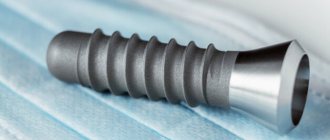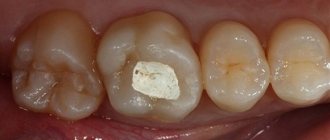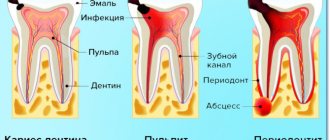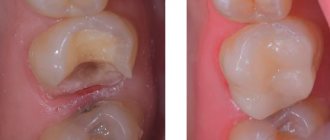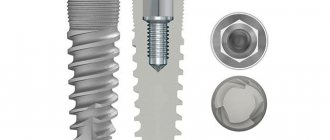Home / Complaints, courts, consumer rights / Services and consumer protection
Back
Published: September 30, 2018
Reading time: 6 min
4
901
Installing a filling on a tooth or prosthetics are the most popular dental services in Russia. Before dental interventions, it is worth clarifying what warranty period applies to the filling or prosthesis.
- Legal standards
- Warranty period for dental services
- Types of warranty obligations
- In what cases and how are dentures and fillings repaired or replaced under warranty?
During this period, the client of the dental clinic has the right to have defects eliminated free of charge.
Legal standards
The warranty period for the installation of a filling or denture is understood as the period during which the clinic and a specific dentist are responsible for the quality and consequences of the service provided.
The installation of a filling on a tooth or prosthetics is subject to the Law on the Protection of Consumer Rights. It states that the performer of certain works and services must himself establish a warranty period for them.
At the same time, the legislation contains a condition that the provision of such a guarantee is an obligation, and not a right, of dentists. At a minimum, fillings and dentures should be covered by a warranty period.
During the warranty period, a patient at a dental clinic can count on:
- for free elimination of defects or re-installation of the seal free of charge;
- for the return of losses incurred by the patient if it was necessary to correct shortcomings in another clinic.
The patient also has the right to refuse the services of this doctor, then the dentist must pay him monetary compensation upon request.
In addition to the Law on the Protection of Consumer Rights, the installation of a guarantee on the seal must occur in accordance with the “Rules for the provision of paid medical services by medical institutions”, which were approved by the Decree of the Government of the Russian Federation of 1996, as well as the Civil Code, Federal Law-323 of 2011 “On the Fundamentals protection of the health of citizens in the Russian Federation", standards of medical care, protocols for the management of patients adopted by the Ministry of Health of the Russian Federation.
Treatment of caries in the Lazarevsky district of Sochi
- What is caries?
- What determines the cost of caries treatment?
- Why does food get stuck between teeth?
- The service life of a filling and what does it depend on?
- The seal is stained around the edges. Does it need to be changed?
- Why does a filling fall out?
- Why shouldn’t you wait for the filling to “grind in” on its own if it is too high for your bite?
- Which filling is better?
- What is better, a filling or an inlay?
- Why do fillings change color over time?
- Why is it necessary to restore a tooth with a pin?
1) What is caries?
Caries is the most common disease known (97%).
People have suffered from tooth decay and its complications for many centuries (you can even remember the American president with a $100 bill). So what is it? In simple terms, caries is the destruction of hard tooth tissue. And the reason for its appearance is simple: food debris stuck to the teeth and not cleaned off with a toothbrush in time is an excellent environment for bacteria to live and reproduce. The acids released by them affect the tooth enamel, causing damage to it. The enamel becomes loose and weakened, and bacteria, breaking through this barrier, penetrate deeper, destroying the tooth from the inside.
Often, caries can be compared to an iceberg. On the enamel side we see slight damage, but inside there is a much larger cavity. And the larger it is, the more difficult dental treatment can be. At the same time, caries detected at an early stage is easier and cheaper to treat.
That's why we recommend not to neglect prof. examinations once every 6 months.
How to treat caries?
Caries is destroyed, non-viable tooth tissue. Unfortunately, it is no longer possible to return them to a healthy state, but with the modern development of technologies and materials in dentistry, caries treatment is a simple and painless procedure.
First of all, it is important to clean the tooth of all damaged tissue, and then fill the formed cavity with filling material, and restore the functional and aesthetic integrity of the tooth.
The seal can be made in two ways:
- If the carious process is relatively small, then the tooth can be restored in one visit by placing a photopolymer filling.
- If the cavity is very large, affecting 2 or more surfaces of the tooth, then the dentist may recommend that you restore the tooth with a ceramic or composite inlay. Such a tab will be more functional, reliable and durable.
2) What determines the cost of caries treatment?
Treatment directly depends on the severity of the disease. Treating caries in the early stages is much easier, faster and cheaper. The longer a patient delays visiting a doctor, the more the tooth is destroyed, and the more expensive its treatment can be.
The cost of caries treatment in the Lazarevsky district of Sochi may depend both on the stage of tooth damage and on the materials and equipment that the dentist uses when working with the patient. A large number of dentists practice in Lazarevskoye, the prices and quality of their services vary greatly.
3) Why does food get stuck between teeth?
Normally, adjacent teeth are quite close to each other, which prevents large pieces of food from getting stuck between the teeth.
For a number of reasons, this contact can be weakened and is the cause of constant discomfort from food getting stuck. The most common reason is an incorrect filling. Firstly, the filling may not fit tightly enough to the adjacent tooth; secondly, a filling on a non-contact surface may have an overhanging edge, which will make it difficult to clean the interdental space. Another reason is periodontal disease (periodontitis), as a result of which the roots of the teeth are exposed, spaces appear between the teeth that are not protected by the gums, tooth mobility occurs, due to which the contacts between the teeth are weakened.
The next reason is malocclusion pathology, when the teeth are not positioned correctly, outside the dentition.
Be that as it may, if food gets stuck between your teeth, this is a reason to see a dentist. Since, in addition to constant discomfort, this can lead to caries and gum inflammation.
4) The service life of the filling and what it depends on.
The service life of a filling is the period after the expiration of the warranty period during which the filling meets aesthetic, clinical and functional requirements. That is, roughly speaking, this is the period of time between the placement of the filling and the need to replace it.
Service life depends on several factors:
1) The professionalism of the doctor and compliance with the filling technology, 2) Oral hygiene, depending on the characteristics of the bite. 3) Regular professional hygiene and grinding of fillings every 6 months.
I. We have already written about the importance of following all stages of the filling protocol. Unfortunately, the patient cannot track these stages because he is not familiar with all medical aspects, but there are nuances that are worth paying attention to:
1) The use of a rubber dam system, which allows you to ensure dryness and sterility of the working field, and the absence of micro-leakages. 2) Working with an assistant with 4 hands allows the doctor to fully concentrate on the treatment process. 3) The doctor’s use of caries markers, which allows, in doubtful cases, to make sure that all carious tissues have been removed. 4) The filling after grinding and polishing should not have sharp edges, the surface should be smooth. 5) If the filling is adjacent to an adjacent tooth, then the floss should pass between the teeth to the end, but with little force.
This is important so that food does not get stuck between the teeth.
II. Oral hygiene is a very important aspect of extending the life of any oral restoration, including fillings. Poor hygiene negates the efforts of the most highly qualified dentist, and caries can occur under an ideal filling. The patient must understand that if he was unable to keep his teeth healthy, then he should not expect that the dentist will be able to do better than what nature created, and forever.
III. Regular professional hygiene during which the dentist checks the fit of previously placed fillings and their grinding.
Any filling material experiences compensatory shrinkage over time. In photopolymer composites, the main shrinkage occurs at the moment the material is illuminated by a lamp, but during natural operation it still continues. After some time, the filling begins to “cling” and requires sanding. The filling-tooth boundary is the “weakest” place for recurrent caries.
During professional hygiene, plaque is also removed, which is fixed in places that are difficult to reach with a toothbrush, which also prevents recurrence of caries under the filling.
Thus, the service life of the filling depends on many factors, and if you follow all the doctor’s recommendations and there are no bite pathologies, it averages 5-7 years.
5) The seal is painted around the edges. Does it need to be changed?
The filling-tooth boundary is the “weakest” point of any filling. A change in the color of the edge of the filling can be caused either by staining with various dyes (tobacco, coffee, tea, etc.), or by the occurrence of relapse of caries in this place.
A dentist can evaluate the cause.
If it is just staining, then the filling can be sanded down to remove pigmentation. If the cause is caries, then it is better to replace the filling without waiting for the tooth to decay even more. Terekhova Tatyana
Dentist-therapist
Karapetyan Grigor
Dentist
6) Why do fillings fall out?
Modern pathologies and materials in dentistry make it possible to produce fairly durable restorations. But sometimes fillings fall out. If a filling falls out shortly after treatment, the reasons are usually the following:
- Violation of seal manufacturing technology
- Leakage of saliva during filling placement
As a rule, if this is the reason, then the filling falls out during the warranty period, and the doctor will replace the filling under warranty.
Other reasons may be:
- Recurrence of caries under a filling
- The occurrence of caries on another surface of the tooth and its spread under the filling
- Violation of the integrity of the seal itself during its natural operation
- Functional overload of the filling due to the patient’s incorrect (pathological) bite.
In any case, if a filling falls out, you should immediately consult a doctor.
7) Why shouldn’t you wait for the filling to “grind in” on its own if it is too high for the bite?
Fillings or ceramic inlays are usually placed under anesthesia. And often the patient cannot accurately understand whether the restoration immediately interferes with the bite. But after several meals you can feel it.
In this case, you should definitely contact your dentist to adjust the height of the filling or inlay.
Modern dental materials are highly durable, and the filling will not rub against the teeth.
But the appearance of pain when biting on a tooth, caused by overload of this tooth, is more than likely. In addition, due to the overestimation of the restoration, it is possible for it to chip.
 Which filling is better?
Which filling is better?
Our patients ask this question quite often. As a rule, they are interested in 2 aspects: photo filling or chemical curing and the manufacturer (Japan, Germany, etc.)
Let's look at it in order: of course, when choosing between a photo-curing filling and a chemical-curing filling, preference should be given to the first. Photocomposite material is more modern, and in its properties, including aesthetic ones, is head and shoulders above its predecessor.
As for the manufacturer of the materials, does this make sense for a patient who does not know how different fillings differ from each other? When placing a filling, what is much more important is not the manufacturer, but the observation of the technological treatment protocol.
Ensuring the working field (cofferdam system) is dry, removing all affected tooth tissue, as well as caries. A large number of other nuances.
As a result, the service life of any filling depends primarily on the skill of the doctor, and not on the manufacturer of the material. If there are important nuances, the doctor will definitely inform you about it.
9) Which is better, a filling or an inlay?
Filling - serves to restore tooth tissue lost as a result of caries. The development of modern materials makes it possible to create fast, aesthetic, functional and durable fillings.
But the modern filling still has a number of disadvantages:
- Compensatory shrinkage during material curing,
- The appearance of internal deformations in the material,
- With large defects, it is impossible to control the marginal fit along the entire border of the filling.
That is why, for large defects, the use of fillings is limited.
And this is where tabs come to the rescue.
An inlay is essentially the same filling, but made on a model in a dental laboratory.
To make inlays, either precious metals or ceramics are used. Ceramics are very similar in properties to tooth enamel.
A ceramic inlay glued to the tooth with special glue completely restores the strength of the tooth and its functionality. Also, the inlay manufacturing technology allows you to control the accuracy of the inlay’s fit to the tooth, avoid overhanging edges of the restoration, and ensure tight contact with adjacent teeth.
In many cases, when tooth decay is severe, but the tooth is still alive, an inlay is the only way to avoid crowning and depulping the tooth (nerve removal).
An inlay, unlike a filling, is made in two visits. During the first appointment, the doctor removes caries, creates a cavity, and takes impressions of the upper jaw and lower jaw. And a temporary filling is placed in the tooth. The impressions are sent to the laboratory, where a dental technician casts models and makes a ceramic inlay on the model. Ceramics are baked in an oven at a temperature of 1050-1100 degrees Celsius. At this moment, all compensatory changes in the material occur.
During the second visit, the doctor fixes the tab into the patient’s tooth. A ceramic inlay is not only stronger than a filling, it is also more beautiful, more practical, and more durable. Plaque does not settle on it, it does not change color over time and does not irritate the gums.
10) Why does the filling change color over time?
Modern materials used for filling teeth are light-curing composites. This material is durable, aesthetic, and allows you to solve many problems. But one of its drawbacks is that it “absorbs” dyes. Stained by coffee, tea, cigarettes and so on. Of course, this happens slowly, but a change in the color of the filling may cause it to be replaced (if it is, for example, a front tooth).
Another reason for a change in the color of the filling is the occurrence of caries under the filling. The tooth under the filling darkens and the filling changes color.
If you notice that the filling is changing color, you need to contact your dentist.
11) Why is it necessary to restore a tooth with a pin?
In case of severe tooth decay, after root canal treatment, it becomes necessary to create additional elements to fix the filling.
Intracanal pins help with this. A pin is fixed into one of the channels (the widest and straightest) with special cement. The cavity is then filled with filling material.
The clinic administrator will be happy to answer all your questions: | Make an appointment with a doctor at our clinic for an examination: |
| ORDER A CALL-CONSULTATION | MAKE AN APPOINTMENT |
Warranty period for dental services
The warranty period for dental services is set at the discretion of the doctor. There is no violation of consumer rights in the fact that each clinic sets its own time frame for which the warranty period applies.
With regard to the installed seal, it is worth distinguishing between concepts such as warranty period and service life . The latter, as a rule, is an order of magnitude longer. For example, the service life of a crown is 15 years, but this does not mean that the warranty will last all this time.
The start date of the warranty period is the date of provision of the medical service, the end date is the next day after the expiration of the warranty.
The duration of the warranty period is influenced by the clinical picture of the patient’s oral cavity. Thus, with increased tooth wear, the presence of oral diseases (in particular, such as periodontitis, stomatitis, periodontal disease), and occlusion characteristics, the guarantee may have a shorter time frame.
The timing may be influenced by the patient’s compliance with oral hygiene and attendance at free regular examinations.
In many ways, the warranty period depends on the materials used by the dentist when making the filling.
Typically, dentists provide longer warranties for more expensive and higher quality materials.
For example, for cheap cements the warranty period is set at 3 months; for expensive light fillings it can last up to 2 years. In most clinics, the warranty on fillings is set at 1 year.
It is worth noting that a very long warranty (more than 10 years) should alert the patient . Most likely, a careless dentist does not even think about fulfilling such warranty obligations.
As for installed prostheses, they have extended warranty periods. When using prosthetics with single crowns, they average 2-5 years, with crowns on implants - 4-10 years, with bridge prostheses - 4-10 years.
According to the Consumer Protection Law, the warranty begins to be calculated from the moment the relevant service is provided, but dental services may be subject to a reduced warranty. The patient must be notified about the reduction in time and the reasons for this and this fact must be recorded in the medical record.
Guarantee for certain types of services.
2.1 Warranty obligations for therapeutic treatment.
Therapeutic treatment includes treatment of diseases: caries, pulpitis and periodontitis (the last two are associated with root canal treatment), cosmetic dentistry (restoration or change of the original shape and color of a tooth without prosthetics, replacement/adjustment of fillings), preparation (treatment) of teeth for prosthetics. The guarantee begins to apply from the moment the treatment of a particular tooth is completed. Signs of the end of treatment are: • in the treatment of caries - a permanent filling has been placed. • in the treatment of complications of caries (pulpitis and periodontitis) - a permanent filling and permanent filling of the root canals.
The standard warranty period is 6 months.
The guarantee applies to: • treatment of enamel caries and dentin caries. • for the treatment of pulpitis
LLC “Center for Dentistry and Maxillofacial Surgery” guarantees you that: • the filling supplied to you will not break or fall out. It is possible to change the color by 1 tone (toward lightening or darkening). • when treating caries, tooth decay will stop, secondary caries (black stripe around the filling) will not occur. • during the treatment of pulpitis, if complete patency of the root canals of the tooth is possible, you will have permanent filling of the root canals with gutta-percha to the physiological apex. • we guarantee the correct choice of treatment method and the correct initial diagnosis.
Reduced warranty. Combined warranty. Disclaimer of warranty. Due to the difficulty of clearly predicting the outcome of treatment, it is possible to provide a reduced guarantee in the following cases: • for the treatment of a tooth that has direct indications for further prosthetics (restoration with a ceramic inlay (destruction of 40 to 60% of the volume of the tooth crown) or covering with an orthopedic crown (destruction of more than 60%) - the warranty is provided for a period of one month. Destruction of the tooth crown (partial or complete destruction of the filling, tooth, loss of the filling) is redone free of charge during the warranty period. • in case of repeated root canal treatment (endodontic treatment) and the impossibility of root canal patency for reasons: severe curvature, impossibility of complete unsealing, partial possibility of passage (it is not possible to pass part of the canal to the required length) - the warranty is provided for a period of one month. For the seal, the warranty can be provided in full (i.e. for 12 months). • Removal of hidden debris instrument, closing the perforation of the root canal wall during treatment in another medical institution - the guarantee is provided for a period of one month. The seal can be guaranteed in full (i.e. for 6 months). • The patient makes significant adjustments to the treatment plan or does not agree with the treatment plan proposed by the doctor. The fact that the warranty period has been reduced must be noted in the outpatient card before the start of treatment.
If there are limiting conditions for providing a full guarantee for 6 months, it is possible to provide a combined guarantee: separately for root canal treatment, separately for the supplied filling.
The guarantee does not apply to: • treatment of deep caries (the tooth may need to be depulped) • treatment of chronic periodontitis (additional procedures may be required to relieve root inflammation) • any retreatment of teeth (under the filling there may well be a large carious cavity, fracture or some kind of then another problem, then either more complex treatment or tooth extraction will be required). The fact that the warranty period has been reduced must be noted in the outpatient card before the start of treatment.
2.2 Warranty obligations for prosthetics
(orthopedic work).
There are permanent non-removable, permanent removable and temporary structures:
The standard warranty period for permanent fixed structures is 12 months. Permanent fixed orthopedic work includes: • Metal, metal-ceramic, metal-free crowns (on a zirconium oxide or pressed ceramic frame), including those on implants. • Bridge structures: metal, metal-ceramic.
The warranty period for permanent removable structures is 4 months. Permanent removable orthopedic work includes: • Complete and partially removable laminar dentures, clasp dentures (including those on implants).
Temporary orthopedic work is guaranteed until they are replaced with permanent structures, but not more than two weeks, with the exception of long-term temporary structures made by laboratory methods. For temporary long-term structures, the warranty period is 3 months. Temporary orthopedic work includes: • Temporary crowns • Temporary replacement prostheses
The guarantee for orthopedic work begins to apply from the moment the work is fixed in the oral cavity. The guarantee for temporary orthopedic work also begins to apply from the moment the temporary structures are installed in the patient’s mouth. A guarantee is provided for orthopedic work. The guarantee for preparation for prosthetics (therapeutic treatment) is defined in section 2.1 “Warranty obligations for therapeutic treatment”.
Please note that temporary orthopedic structures must be replaced with permanent ones. The recommended period of wearing temporary structures is determined by the dentist.
A guarantee for permanent orthopedic work is provided for the following items: • Destruction of the structure or de-cementing of a permanent fixed structure. • Loss of artificial teeth from dentures, fracture of the plastic of the denture, destruction of micro-locks (attachments) and micro-hooks (clasps). • Destruction of temporary structures and their decementing.
Possible cases of reduced warranty
Existing medical methods of prosthetics do not allow for a full warranty period (6 months) in the presence of the following diagnoses or cases: • The presence of tooth mobility. The warranty period is determined by the doctor. • Having a diagnosis of gum disease: periodontitis, periodontal disease. The warranty period is determined by the doctor depending on the severity of the gum disease. • Therapeutic training was not carried out at the Center for Dentistry and Maxillofacial Surgery LLC. • The patient makes significant adjustments to the treatment plan or does not agree with the treatment plan proposed by the doctor. The fact that the warranty period has been reduced must be noted in the outpatient card before the start of treatment.
In the absence of clear medical indications for performing certain types of prosthetics and the patient’s desire to perform the work according to a certain scheme, the dentist has the right to establish a warranty period for the orthopedic structure of 1 month, having previously notified the patient about this.
2.3 Warranty obligations for surgical treatment.
After surgery, the dental clinic ensures that: • the extraction is complete (i.e. there are no residual teeth particles). In surgical dentistry, the result of treatment depends not only on the skill of the doctor, but also on the health status of the patient. LLC Center for Dentistry and Maxillofacial Surgery guarantees the correctness of the procedures performed and their compliance with Russian and international standards, but it is completely impossible to predict how and with what sensations healing will occur after surgery.
Possible cases of reduced warranty
• The patient makes significant adjustments to the treatment plan or does not agree with the treatment plan proposed by the doctor. The fact that the warranty period has been reduced must be noted in the outpatient card before the start of treatment.
If any symptoms of deterioration in health appear after surgery, you should immediately contact a doctor or medical receptionist at the dental center.
2.4 Warranty obligations for periodontal treatment.
LLC “Center for Dentistry and Maxillofacial Surgery” guarantees you that during professional hygiene, all supragingival dental plaque (hard and soft) will be removed, and the teeth will acquire a natural color. Please note that after professional hygiene, gum swelling may decrease, which leads to exposure of subgingival deposits. In this case, a corrective procedure may be required, paid for by the patient. Periodontal treatment (treatment of gum disease) is aimed at eliminating or stopping the disease. Each case depends on many factors (general condition of the body; taking certain medications; nutrition; oral hygiene - frequency of brushing teeth; strictly following the recommendations of the attending physician).
Guarantee for all resective techniques: open curettage, flap surgery, frenuloplasty and vestibuloplasty - 3 months.
Possible cases of reduced warranty
• The patient makes significant adjustments to the treatment plan or does not agree with the treatment plan proposed by the doctor. The fact that the warranty period has been reduced must be noted in the outpatient card before the start of treatment.
The guarantee does not apply to: • soft tissue plastic surgery, since these interventions are highly dependent on the general health of the body and the patient's lifestyle, as well as on the patient's compliance with the recommendations of the attending physician.
If any symptoms of deterioration in health appear after surgery, you should immediately contact a doctor or medical receptionist at the dental center.
2.5 Warranty obligations for implantological treatment.
The guarantee applies to: • all bone grafting operations. If you have undergone bone grafting surgery, you will have an implant installed in the area of the reconstructed bone. • during dental implantation surgery. If you have an implant installed, it must be completely integrated and in the desired position. • the standard warranty period for an installed implant is 2.5 years. • the standard warranty period for orthopedic work using implants is 6 months.
Possible cases of reduced warranty
• The patient makes significant adjustments to the treatment plan or does not agree with the treatment plan proposed by the doctor. The fact that the warranty period has been reduced must be noted in the outpatient card before the start of treatment.
The guarantee does not apply to: • soft tissue plastic surgery, since these interventions are highly dependent on the general health of the body and the patient's lifestyle, as well as on the patient's compliance with the recommendations of the attending physician. The fact that the warranty period has been reduced must be noted in the outpatient card before the start of treatment.
If any symptoms of deterioration in health appear after surgery, you should immediately contact a doctor or medical receptionist at the dental center.
Types of warranty obligations
The guarantee for installing a seal consists of a guarantee of the quality of the services provided and a guarantee that applies to the materials used. That is, the dentist in this case is responsible for the filling materials that he uses in his work. Due to the fact that the material turned out to be defective, the doctor does not relieve himself of responsibility for the work he performed.
The guarantee only applies to cases where the defect in the filling was not caused by the patient himself . For example, if a patient opens beer bottles with his teeth, then the warranty against damage to the filling will not apply.
Guarantees for quality dental services include several unconditional provisions.
Thus, the dentist is obliged to pre-treat instruments with antiseptics, he must follow safety rules, strictly monitor the dosage of drugs, have a medical education, and adhere to the recommended work schedule.
First, the doctor must make sure that the patient does not have concomitant diseases that may interfere with certain manipulations (for example, the patient may be allergic to certain anesthetics and may require paid pain relief). When performing work, the rule of reasonable risk must be taken into account.
The doctor must provide the patient with the full range of information about what he intends to do, how and what sensations the patients will experience, offer him several treatment options, and indicate the cost of the upcoming filling; obtain informed consent from the patient and then do your job.
With regard to the guarantee for materials, it is meant that the material will remain safe throughout the entire operational period, the patient is guaranteed the preservation of the mechanical functions of the filling and tooth, and an aesthetic appearance.
How to judge the durability of treatment results?
Several criteria are used for this:
- service quality guarantee. Confirms the correctness of the manipulations performed by the doctor, the choice of therapy method, the materials used and protects the patient from the occurrence of complications and disruption of the functionality of the installed structures. Such guarantees establish the minimum period for which the clinical well-being of a treated tooth or area of gum is maintained: pain, signs of inflammation do not appear, the filling does not collapse;
- warranty period is the period during which dentistry is responsible for the results of the provision of services. It is reflected in the patient’s medical record and may be indicated in the visit card;
- service life of materials or structures. Determines the minimum period during which installed fillings, restorations, splints, crowns, dentures, implants or other structures will last. The actual service life can usually be much longer than the “official” one.
During the warranty period, minor or significant defects may occur. The first include defects that do not affect the patient’s well-being, the functionality of the restored, treated teeth or used structures. They do not require mandatory elimination and do not reduce the service life of treatment results. Significant deficiencies require mandatory elimination. This may include breakdowns of orthodontic and orthopedic structures, destruction of filling materials and other deficiencies that arise through no fault of the patient and are corrected under warranty.
The main indicator for the patient is service life. In each clinical case it is calculated individually. On average these terms are:
- about five years for fillings installed in the treatment of moderate caries. The filling can last longer, but this may require grinding, polishing, correction, and elimination of emerging crown defects;
- about 8-10 years for metal-ceramic crowns. More than half of these restorations last more than 15 years without additional maintenance;
- from 10 years to an unlimited period for an implant, provided that it is properly cared for.
When calculating the warranty period, it may be reduced if:
- the patient insists on a non-optimal treatment plan (for example, direct restoration without strengthening the crown if it is significantly damaged);
- there are signs of insufficiently effective oral hygiene: a large amount of tartar, soft plaque, a large number of teeth affected by caries;
- the patient has chronic gum disease (periodontitis, periodontitis);
- There are pathologies in the structure of the dentition, malocclusion, which increase the load on the installed structures and the restoration performed.


